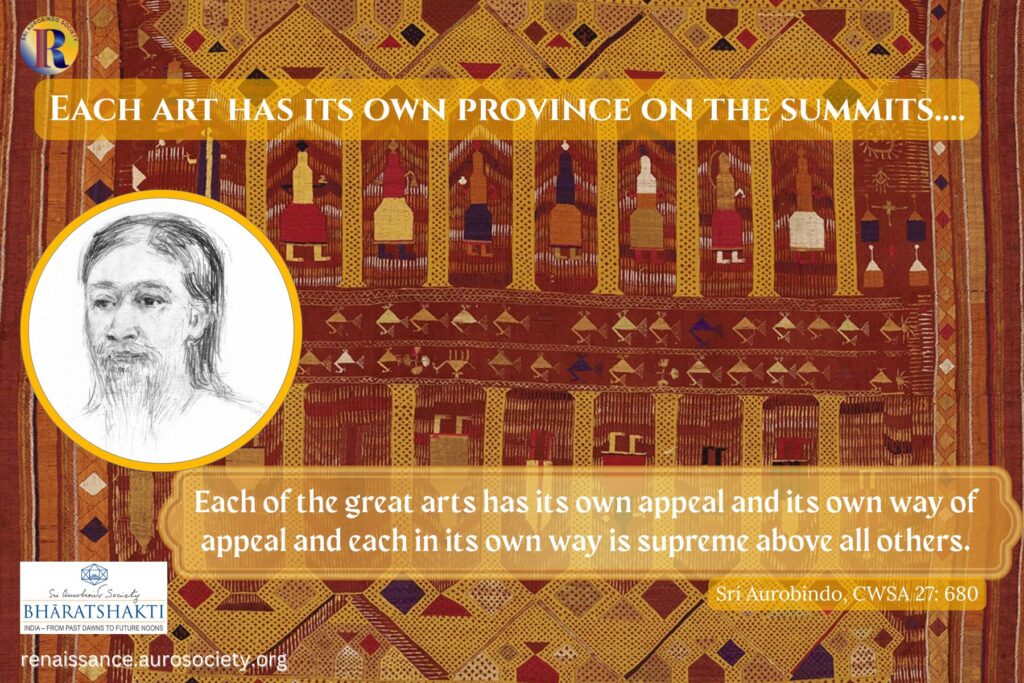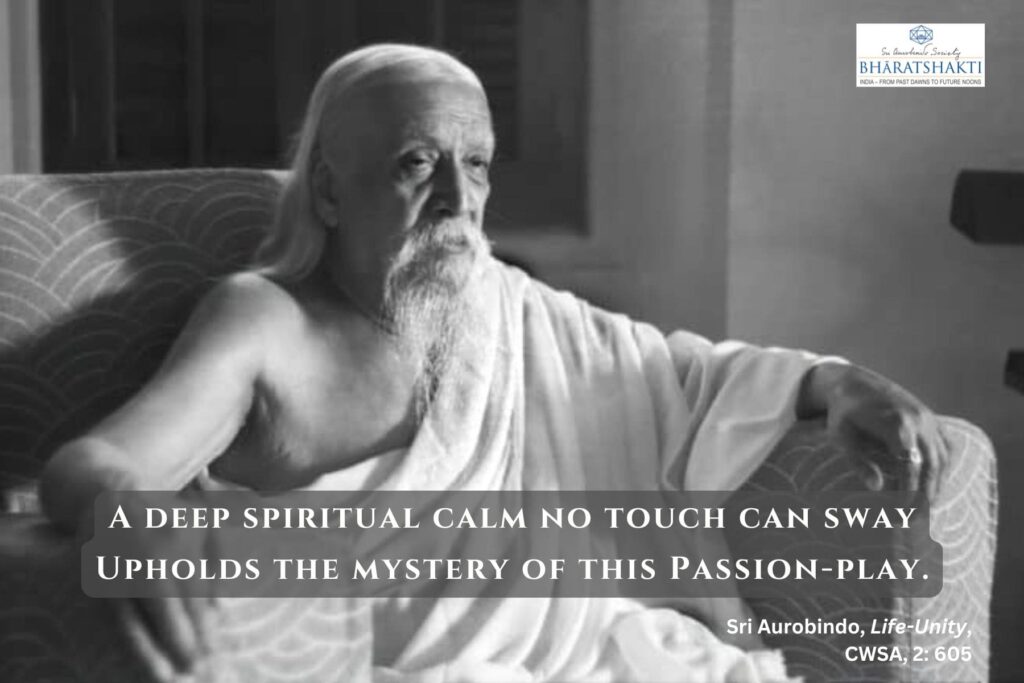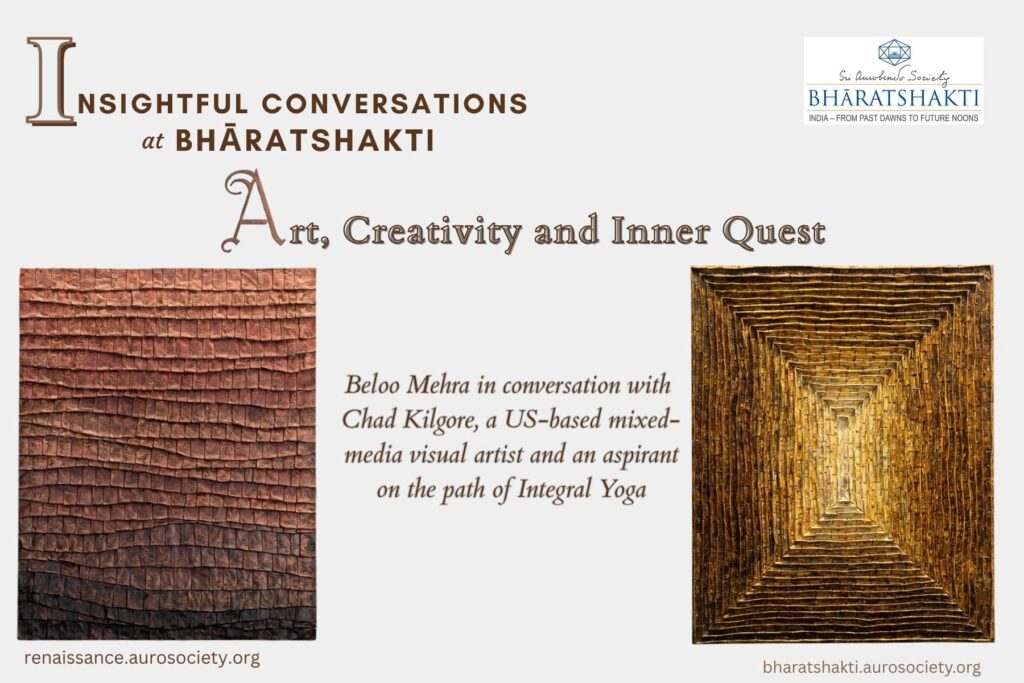Volume V, Issue 1
Author: Narendra Murty
Continued from:
The Inner Truth of Mūrti Pūjā

WATCH:

Let us briefly explore the deep symbolism behind the form of Devi Saraswati.
One who gives the Sara – the essence of one’s own Self – Sva – she is Devi Saraswati. Hence, she is the one who bestows Self Knowledge. Not only Self-knowledge but Knowledge itself is her domain. She is the goddess of learning and knowledge.
Saraswati’s complexion is white and she is also dressed in white – Shubhra vastravrita. White is the colour of Sattwa and Saraswati is a personification of the Sattwa guna. Purity, serenity, knowledge, immaculateness – these are the qualities of Sattwa. That is the significance of Saraswati’s white complexion and white attire.
Saraswati has four hands. In one of her hands, she holds a book. The book represents the Vedas, suggesting the significance of the path of the intellect, the path of knowledge or Jnana Yoga.
The Vedas are also known as Shruti – that which has been heard. They are revealed scriptures, i.e., knowledge revealed in the higher states of consciousness of man through the medium of intuition and inspiration. Saraswati, in the Veda, is the goddess of inspiration.
* * *
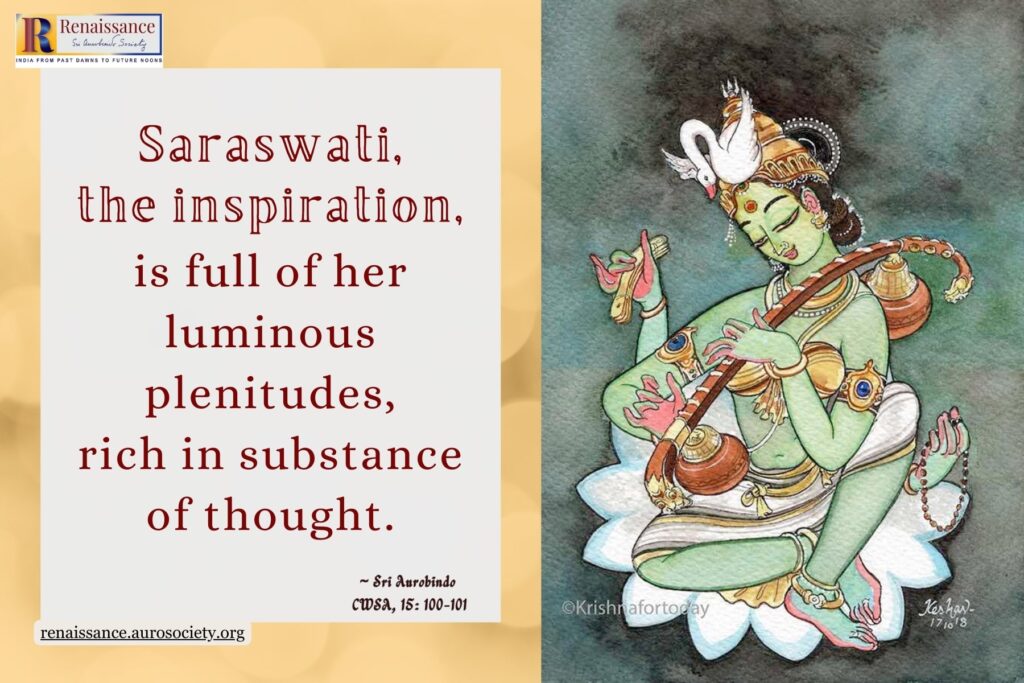
Saraswati, the inspiration, is full of her luminous plenitudes, rich in substance of thought. She upholds the Sacrifice, the offering of the mortal being’s activities to the divine by awakening his consciousness so that it assumes right states of emotion and right movements of thought in accordance with the Truth from which she pours her illuminations and by impelling in it the rise of those truths which, according to the Vedic Rishis, liberate the life and being from falsehood, weakness and limitation and open to it the doors of the supreme felicity.
~ Sri Aurobindo, CWSA, Vol. 15, pp. 100-101
Saraswati is also known as Sharada which is derived from the word Shruti and that is why she is the embodiment of sacred knowledge and wisdom. All this is represented by the book that she holds in her hand.
In another hand Saraswati holds what is known as the Japa mala or rosary beads. The rosary beads are used as an aid to concentration. We count the beads as we concentrate on some divine name or form. Thus, the Japa mala signifies concentration, contemplation and meditation. It is the path of Dhyana, inner withdrawal and contemplation. The rosary beads represent Dhyana which is aided by concentration and focus. No great achievement in life is possible if we do not have the ability to focus and concentrate.
That is why the Mother says,
whatever you may want to do in life, one thing is absolutely indispensable and at the basis of everything, the capacity of concentrating the attention. . . . And the value of an individual is proportionate to the value of his attention.
~ The Mother, CWM, Vol. 9, p. 360
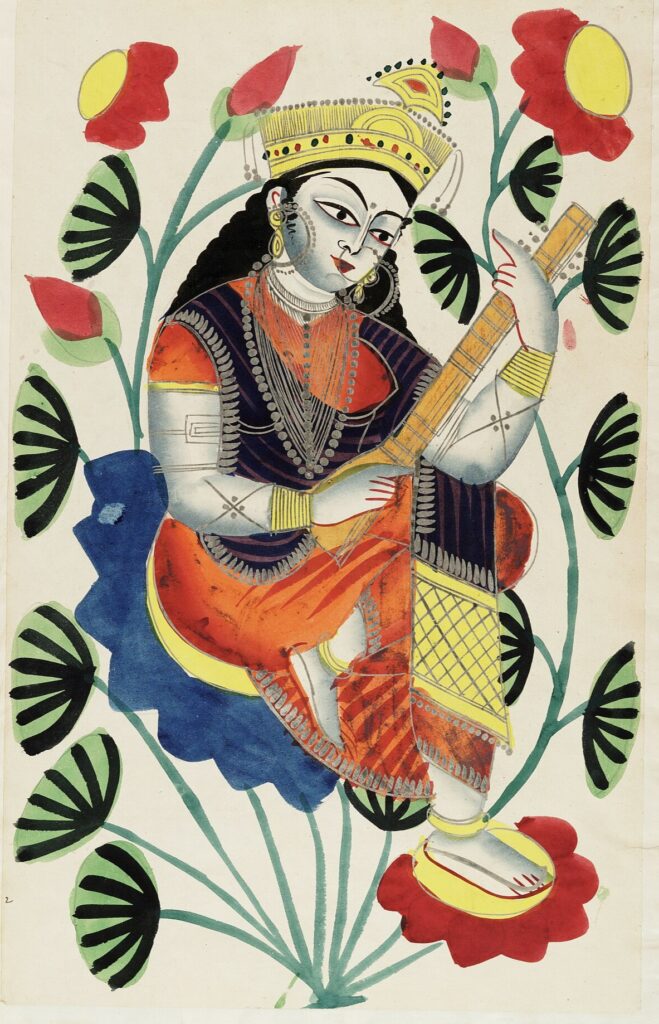
Image: Kalighat painting of Saraswati, 19th century
Source: Wikicommons
With the other two hands Saraswati holds a Veena, a musical instrument which is a symbol for all the arts and aesthetic accomplishments. That is why Saraswati is also the presiding deity for all the art forms. But more importantly and specifically, the Veena represents music and the path of Bhakti or Devotion.
All the saints of our Bhakti movement from Meera to Kabir to Nanak to Chaitanya to Tukaram to Vallabhacharya to Jaidev – composed and sang devotional songs. Even our classical dance forms have an essential element of Bhakti in them and almost all of them in some way express devotional themes. For ages, music, dance, sculpture, temple architecture and other art forms have been means of Sadhana in our land. They essentially express devotion for the Divine being.
Apart from music, the Veena also denotes the principle of sound. Saraswati is also known as Vāgdevi, derived from the Sanskrit vāk – meaning speech. She is the epitome of speech and sound. All knowledge is expressed through vāk and therefore speech and knowledge are inextricably linked. Words and sound are the very vessels through which knowledge is held and conveyed. They are the medium of expression of knowledge.
WATCH A SHORT VIDEO:
Author’s Explanation of the Symbolism of the Form of Saraswati
Saraswati is seated on a white lotus – shweta padmasana. Lotus is a symbol for spiritual enlightenment; Saraswati being seated on a lotus means she is established in spiritual enlightenment. Spiritual enlightenment itself happens to be her seat. The white lotus seat represents the highest state of wisdom and perfection.
Saraswati’s vāhana or vehicle is the Hamsa, the swan.
It is believed that swans have the special ability to separate the water and the milk. It can distinguish between milk and water and takes in only the milk. This in effect, represents the faculty of discrimination, viveka. Whoever is established in knowledge must possess the faculty of discrimination. Without viveka-shakti, without the ability to separate truth from untruth, the ephemeral from the eternal, the reality from appearances, knowledge from ignorance, one can never possess true knowledge. Hence, Saraswati’s swan, like Ganesha’s trunk, is a symbol for the faculty of discrimination, viveka.
* * *
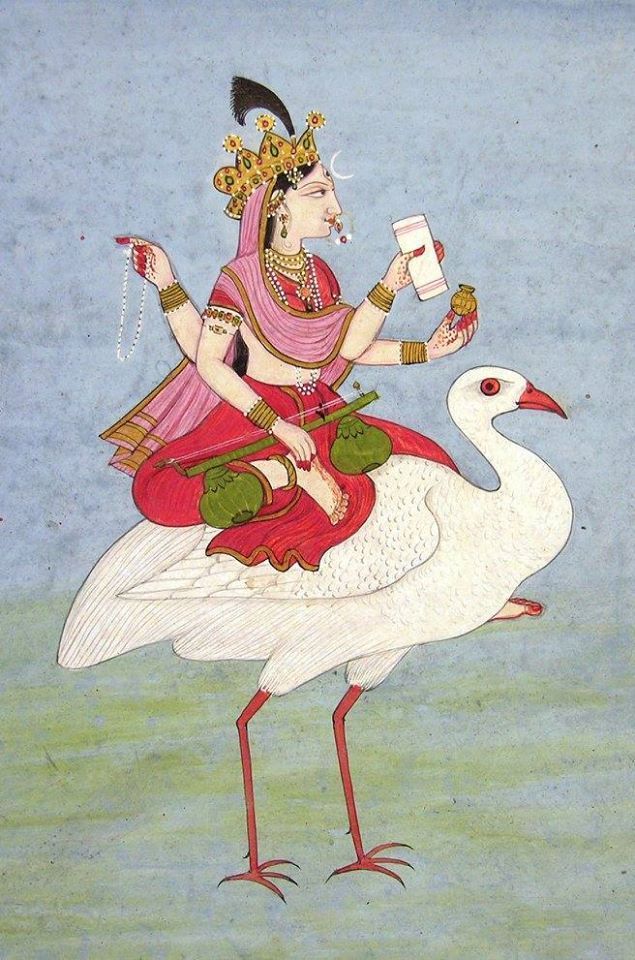
Image: Saraswati, Kangra school, 18th century
Source: Pinterest
Furthermore, the swan not only can swim in the water, it also has the ability to fly in the air. This symbolizes being equally at ease both in the material world (represented by the waters of samsāra) as well as in the spiritual realm (represented by the sky).
Heinrich Zimmer, the great interpreter of symbolism writes,
. . . the wild gander (hamsa) exhibits in its mode of life the twofold nature of all beings. It swims on the surface of water, but is not bound to it. Withdrawing from the watery realm, it wings into the pure and stainless air, where it is as much at home as in the world below. Thus it is the homeless free wanderer, between the upper celestial and the lower earthly spheres, at ease in both, not bound to either.
When the gander wishes, it alights upon the waters of the earth; when it wishes, it withdraws again to the void on high. Hence it symbolizes the divine essence, which, though embodied in, and abiding with, the individual, yet remains forever free from, and unconnected with the events of individual life…
… On the one hand earth-bound, limited in life-strength, in virtues and in consciousness, but on the other hand a manifestation of the divine essence, which is unlimited, immortal, virtually omniscient and all-powerful.
~ Zimmer, The Myths and Symbols in Indian Art and Civilization, 1947, pp. 48-49
Saraswati also represents perfection in things. Sri Aurobindo in his book The Mother writes:
Mahasaraswati is the Mother’s Power of Work and her spirit of perfection and order…The science and craft and technique of things are Mahasaraswati’s province. Always she holds in her nature and can give to those whom she has chosen the intimate and precise knowledge, the subtlety and patience, the accuracy of intuitive mind and conscious hand and discerning eye of the perfect worker.
This power is the strong, the tireless, the careful and efficient builder, organiser, administrator, technician, artisan and classifier of the worlds.
~ CWSA, Vol. 32, p. 22
Thus, Mother Saraswati presides over all detailed execution and perfection in all our works.
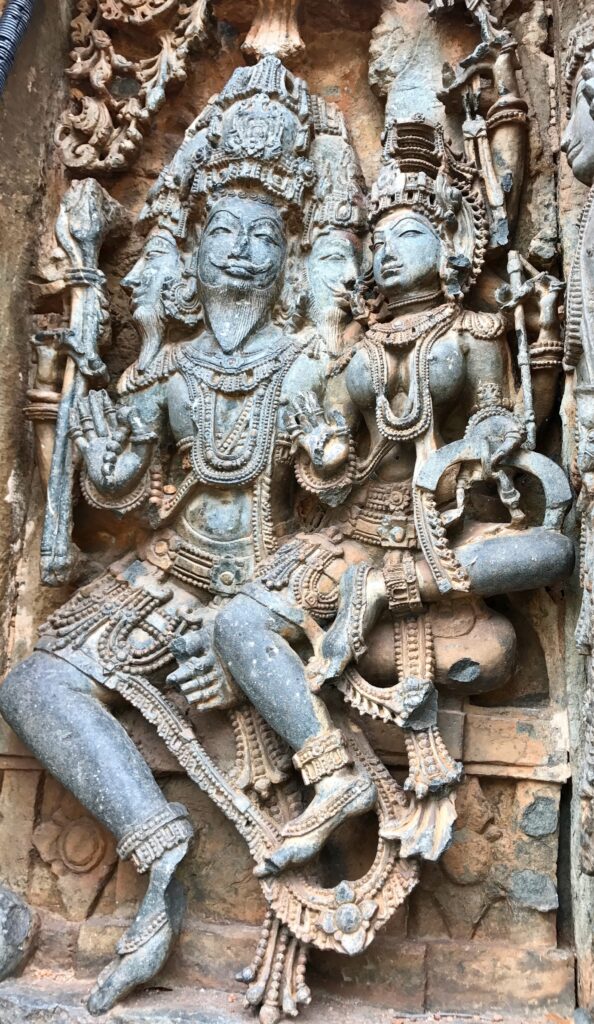
Image: Brahma and Saraswati at Hoysaleswara temple, Halebidu, 12th century. Souce: Wikicommons
And finally, we find that Saraswati is the consort of Brahma, the Lord of Creation. To create anything, knowledge is essential. What is to be created and how it is to be created – this knowledge is essential for creation to take place. Without the union of Saraswati and Brahma, no creation or creative activity is possible. Knowledge and Creation go hand in hand and hence Brahma and Saraswati are wedded. This is the significance of the symbolism of Saraswati.

WATCH A SHORT VIDEO:
Author’s Explanation of the Symbolism of the Form of Saraswati
Don’t miss:
The Inner Truth of Mūrti Pūjā

~ Design: Beloo Mehra

